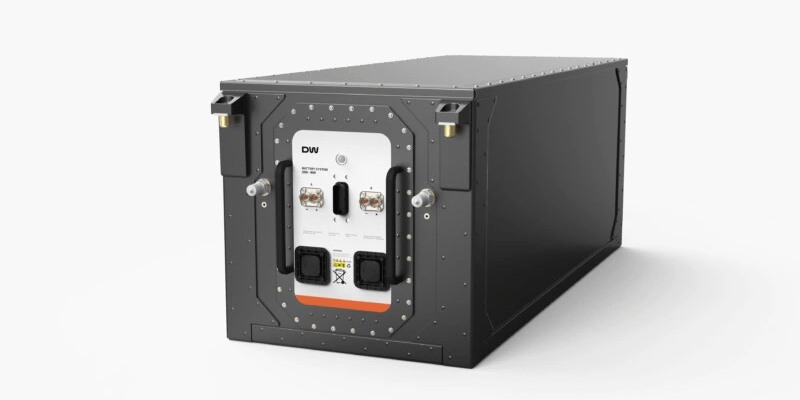Designwerk presents new battery system generation
Swiss eMobility specialist Designwerk is launching a new generation of its battery systems. The portfolio is growing by four models: New are battery systems with a capacity of 125 and 250 kilowatt hours and voltage options of 400 or 800 volts maximum each.
The new generation also introduces a battery system with a gross capacity of 254.2 kWh, which Designwerk says is one of the largest systems for electric vehicles on the market. Just as interesting as the pure energy content are the energy density specifications. Here, the Swiss company names a gravimetric energy density of 181 Wh/kg and a volumetric energy density of 257 Wh/l.
In other words, a 254.2 kWh battery system would require 1.4 tonnes and 990 litres of installation space, while the 125 kWh system would require half as much. Since the individual battery systems can be interconnected with a high-voltage distribution unit, it should be possible to “configure individual battery packs from 125 kWh to 1,000 kWh.” A 1,000-kWh battery would consequently weigh around 5.4 tonnes.
With the two system voltages of 400 and 800 volts, the new batteries will be used especially in trucks and other commercial vehicles for on- and off-road applications, Designwerk said. In addition, the systems are said to allow “highest charging rates” and have “good cycle stability” – but these two factors are not precisely quantified in the announcement.
With the new variants, which expand the portfolio, Designwerk wants to offer its customers more options “to meet individual installation space and performance requirements.” What remains the same, however, are the basic requirements that the Swiss company places on its own systems: There is an in-house battery management system (BMS) that monitors all the system’s parameters and specifies the maximum available power in each case, depending on the state of charge and temperature. The design further includes as standard a pre-charge, interlock, fuses and cooling plates for thermal management, which are integrated into an aluminum housing, and 24 mm insulation on all sides. Thus, the battery cells are protected from mechanical and thermal influences.





0 Comments